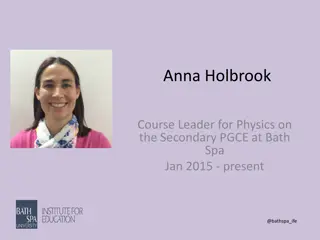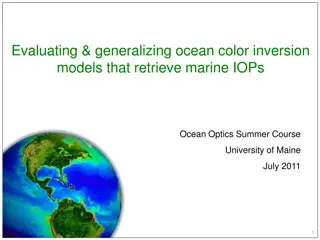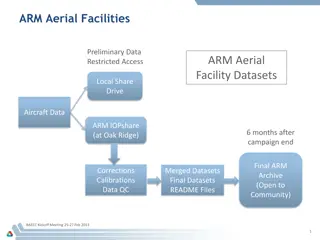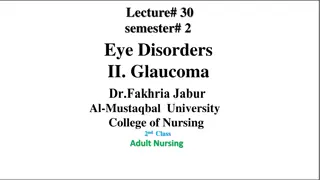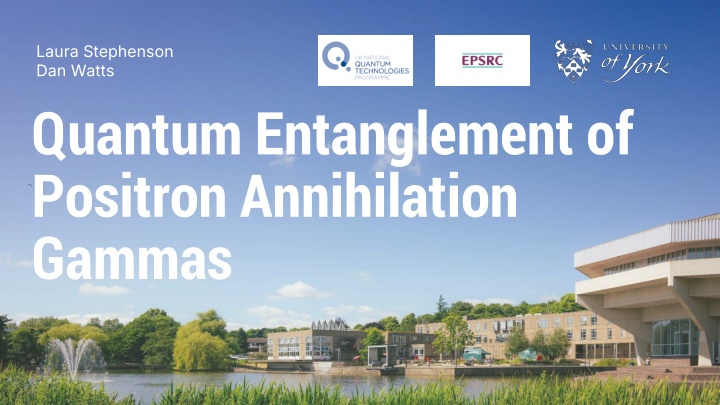
Quantum Entangled Photons in PET Imaging: Witnessing Entanglement Through Compton Scattering
Explore the fascinating world of quantum entangled photons in Positron Emission Tomography (PET) imaging. Witness the entanglement phenomenon through Compton scattering, shedding light on the interconnected nature of particles in PET scans. Discover the principles, challenges, and applications of quantum entanglement in PET imaging.
Uploaded on | 1 Views
Download Presentation

Please find below an Image/Link to download the presentation.
The content on the website is provided AS IS for your information and personal use only. It may not be sold, licensed, or shared on other websites without obtaining consent from the author. If you encounter any issues during the download, it is possible that the publisher has removed the file from their server.
You are allowed to download the files provided on this website for personal or commercial use, subject to the condition that they are used lawfully. All files are the property of their respective owners.
The content on the website is provided AS IS for your information and personal use only. It may not be sold, licensed, or shared on other websites without obtaining consent from the author.
E N D
Presentation Transcript
Laura Stephenson Dan Watts Quantum Entanglement of Positron Annihilation Gammas
Overview Positron Emission Tomography (PET) Imaging Quantum Entangled (QE) ? Witnessing Entanglement with Compton Scattering (CS) 3 ? PET 1
PET Imaging Principals Leading modality of Cancer and Alzheimer's diagnosis -Functional imaging Patient is injected with Positron (e+) emitting biologically labelled radioactive isotope Positron thermolises and rapidly annihilates with electron in patient e++ e- 2 ? Photons escape patient to detector https://simplevibesstudio.co m/products/anatomical- brain-algorithmic-string-art- diy 2
PET Imaging Challenges Scatter and random coincidences introduce errors 80% of annihilations discarded! Attenuation coefficients used to deconvolve scatter -requires CT (<100 keV 511 keV extrapolation), movement artifacts, CPU time PET scan gives no anatomical information - relies on combined CT PET scan no sensitivity to annihilation environment (eg O2, pH, tissue type) Varoquaux et al., Functional Imaging of Head and Neck Squamous Cell Carcinoma with Diffusion-Weighted MRI and FDG PET/CT . 3
Quantum Entangled ? ? Photons QE in PET Imaging Photons are back-to-back and orthogonally polarised Entangled direction ( + , -) and polarisation ( x , y ) x y y x + - - + Any effect on one photon is immediately felt on the other 4
Witnessing Entanglement with CS Polarisation dependant CS Compton scattering (CS) ? + e > ?/+ e/ is the plane of scattering which relates to polarization CS described by Klein Nishina is proportional to sin2 Therefore CS depends on polarization entangled! YAZAKI, How the Klein Nishina Formula Was Derived . 5
Witnessing Entanglement with CS Double CS Double CS occurs when both photons scatter 2 1 = 2- 1 Incorporating wavefunction into Klein Nishina x + y y x - - + Watts et al., Photon Quantum Entanglement in the MeV Regime and Its Application in PET Imaging . 6
Witnessing Entanglement with CS cos(2 ) Witness Double CS occurs when both photons scatter 2 1 1,2 = 70o- 110o = 2- 1 Entanglement is observable from the magnitude of cos(2 ? ?) modulation Watts et al., Photon Quantum Entanglement in the MeV Regime and Its Application in PET Imaging . 7
Witnessing Entanglement with CS Triple Compton Scattering Photons often scatters in the patient before reaching the detector 2 = 2- 1 1 8
Witnessing Entanglement with CS Triple Compton Scattering Photons often scatters in the patient before reaching the detector 2 = 2- 1 1 Experimentally determined if entanglement is preserved in triple CS using segmented LYSO Calorimeters 8
Witnessing Entanglement with CS Experimental Setup Head casing Scatterer LYSO crystal LYS O Source location LYSO Crystals Inside each head 9
Witnessing Entanglement with CS Small Angle results Events with (left) and without (right) multiple scattering Well above classical limit (pink:left & yellow:right) Demonstrated that Photonic QE at MeV scale is rather robust! Watts et al., Photon Quantum Entanglement in the MeV Regime and Its Application in PET Imaging . 10
Witnessing Entanglement with CS Expanding Theory Predict rise in entanglement ratio for larger scattering angles-due to non perfect detector Large angle scattering breaks the degeneracy between the two theories. Investigating Backscattering will inform us if entanglement is fully maintained in TCS or not 11
Witnessing Entanglement with CS Backscattering Total Energy in AM1 5 No need for new experiment! Counts Events with 4 hits ( 1& 2) in the same head 1st photon deposit 511 KeV in head 0620 680 740 2nd photon deposits 335 KeV in Scatterer and Energy (keV) 176 KeV in head Observe a Gaussian peak in head energy of 687 KeV 12
Three ? ? PET Theory Prior to annihilation the Positron can form Positronium (Ps) singlet (para-Ps ) or triplet(ortho-Ps ) spin states Ground state Decay of para-Ps e++ e- 2? Ground state Decay of ortho-Ps e++ e- 3? Hiesmayr and Moskal, Genuine Multipartite Entanglement in the 3-Photon Decay of Positronium . The decay rates are sensitive to the medium such as O2 concentration, electron density, pH . Ratio 2:3 ? photons could infer annihilation medium! 13
Three ? ? PET Experimental setup York s expanded LYSO segmented calorimeter array in z plane Tokyo s GaGG ring in x-y plane acting as compton camera Measure example in nature of a genuinely fully entangled multiparticle system Uenomachi, Shimazoe, and Takahashi, Double Photon Coincidence Crosstalk Reduction Method for Multi-Nuclide Compton Imaging . 14
Future of PET Imaging Applying QE Scatter and random coincidences introduce errors 80% of annihilations discarded! Attenuation coefficients used to deconvolve scatter- PET scan gives no anatomical information - https://leedstestobjects.com/wp- content/uploads/NU4-PET-IQ- product-specifications.pdf?x54702 PET Scan no sensitivity to annihilation environment (eg O2, pH) 15
Future of PET Imaging Applying QE Scatter and random coincidences introduce errors 80% of annihilations discarded! Recycle scattered data to build map with AI Filter randoms based on QE witness Attenuation coefficients used to deconvolve scatter- PET scan gives no anatomical information - https://leedstestobjects.com/wp- content/uploads/NU4-PET-IQ- product-specifications.pdf?x54702 PET Scan no sensitivity to annihilation environment (eg O2, pH) 15
Future of PET Imaging Applying QE Scatter and random coincidences introduce errors 80% of annihilations discarded! Recycle scattered data to build map with AI Filter randoms based on QE witness Attenuation coefficients used to deconvolve scatter- Extract actual attenuation coefficients from scatter map no CT PET scan gives no anatomical information - https://leedstestobjects.com/wp- content/uploads/NU4-PET-IQ- product-specifications.pdf?x54702 PET Scan no sensitivity to annihilation environment (eg O2, pH) 15
Future of PET Imaging Applying QE Scatter and random coincidences introduce errors 80% of annihilations discarded! Recycle scattered data to build map with AI Filter randoms based on QE witness Attenuation coefficients used to deconvolve scatter- Extract actual attenuation coefficients from scatter map no CT PET scan gives no anatomical information - Build Scatter map and anatomical information with AI https://leedstestobjects.com/wp- content/uploads/NU4-PET-IQ- product-specifications.pdf?x54702 PET Scan no sensitivity to annihilation environment (eg O2, pH) 15
Future of PET Imaging Applying QE Scatter and random coincidences introduce errors 80% of annihilations discarded! Recycle scattered data to build map with AI Filter randoms based on QE witness Attenuation coefficients used to deconvolve scatter- Extract actual attenuation coefficients from scatter map no CT PET scan gives no anatomical information - Build Scatter map and anatomical information with AI https://leedstestobjects.com/wp- content/uploads/NU4-PET-IQ- product-specifications.pdf?x54702 PET Scan no sensitivity to annihilation environment (eg O2, pH) Use 2:3 ? ratio to identify medium 15
Laura Stephenson Dan Watts Thank you for listening! Any Questions?
Extra details Perfect Detector 1sttheory (York) implemented in G4 (3CG4-Caradonna) Stokes Muller matrix formalism based on quantum field theory, includes decoherence effects Also developed a model (QEG4-Ent) -> final CS according to partial polarization ansatz of Snyder et. al. (assuming no decoherence) Decoherence (at least its effect on R) -> small TCS brings in measurement frame effects Photon frame -phi relative to poln. > only accessible in simulation. 15
Extra details R Entanglement witness distributions for different intermediate CS angles Event mixing to remove detector acceptance Fit distributions with: Acos(2 ) +B Watts et al., Photon Quantum Entanglement in the MeV Regime and Its Application in PET Imaging . Enhancement (R) is: R = (B-A) / (B+A) R -Quantitative measure of correlation between the final CS of the two 15
Extra details Theta effect on visibility Hiesmayr and Moskal, Witnessing Entanglement In Compton Scattering Processes Via Mutually Unbiased Bases . 15
Extra details Removing Randoms FBP PET image Image slice from around max (min) amplitude Subtract slices using weight derived from G4 simulation Isolate image from true events! Different weighting: Spatially resolved determination of random profile 15 Watts et al., Photon Quantum Entanglement in the MeV Regime and Its Application in PET Imaging .
Extra details Positronium decay rates O-Ps lifetime vacuum 142 ns P-Ps lifetime vacuum 125 ps light grey is adipose tissue, medium grey is hepatic tissue and dark grey is muscle 70x more events via pick off (2?) than self annihilation (3?) in intermolecular voids Typical PET 330 MBq F18 half life 109 min Tao, Positronium Annihilation in Molecular Substances . Avachat et al., Ortho-Positronium Lifetime for Soft-Tissue Classification . Moskal et al., Positronium Imaging with the Novel Multiphoton PET Scanner . 15
Extra details GaGG Ring details Uenomachi, Shimazoe, and Takahashi, Double Photon Coincidence Crosstalk Reduction Method for Multi-Nuclide Compton Imaging . 15
Extra details References 1. Varoquaux, Arthur, Olivier Rager, Karl-Olof Lovblad, Karen Masterson, Pavel Dulguerov, Osman Ratib, Christoph D. Becker, and Minerva Becker. Functional Imaging of Head and Neck Squamous Cell Carcinoma with Diffusion-Weighted MRI and FDG PET/CT: Quantitative Analysis of ADC and SUV . European Journal of Nuclear Medicine and Molecular Imaging 40, no. 6 (June 2013): 842 52. https://doi.org/10.1007/s00259-013-2351-9. YAZAKI, Yuji. How the Klein Nishina Formula Was Derived: Based on the Sangokan Nishina Source Materials . Proceedings of the Japan Academy. Series B, Physical and Biological Sciences 93, no. 6 (9 June 2017): 399 421. https://doi.org/10.2183/pjab.93.025. Watts, D. P., J. Bordes, J. R. Brown, A. Cherlin, R. Newton, J. Allison, M. Bashkanov, N. Efthimiou, and N. A. Zachariou. Photon Quantum Entanglement in the MeV Regime and Its Application in PET Imaging . Nature Communications 12, no. 1 (11 May 2021): 2646. https://doi.org/10.1038/s41467-021-22907-5. Bordes, Julien, James R. Brown, Daniel P. Watts, Mikhail Bashkanov, Kieran Gibson, Ruth Newton, and Nicholas Zachariou. First Detailed Study of the Quantum Decoherence of Entangled Gamma Photons . Physical Review Letters 133, no. 13 (25 September 2024): 132502. https://doi.org/10.1103/PhysRevLett.133.132502. Uenomachi, M., K. Shimazoe, and H. Takahashi. Double Photon Coincidence Crosstalk Reduction Method for Multi-Nuclide Compton Imaging . Journal of Instrumentation 17, no. 04 (April 2022): P04001. https://doi.org/10.1088/1748-0221/17/04/P04001. Hiesmayr, Beatrix C., and Pawel Moskal. Genuine Multipartite Entanglement in the 3-Photon Decay of Positronium . Scientific Reports 7, no. 1 (10 November 2017): 15349. https://doi.org/10.1038/s41598-017-15356-y. Hiesmayr, Beatrix C., and Pawel Moskal. Witnessing Entanglement In Compton Scattering Processes Via Mutually Unbiased Bases . Scientific Reports 9, no. 1 (3 June 2019): 8166. https://doi.org/10.1038/s41598-019-44570-z. Tao, S. J. Positronium Annihilation in Molecular Substances . The Journal of Chemical Physics 56, no. 11 (1 June 1972): 5499 5510. https://doi.org/10.1063/1.1677067. Moskal, Pawe , Kamil Dulski, Neha Chug, Catalina Curceanu, Eryk Czerwi ski, Meysam Dadgar, Jan Gajewski, et al. Positronium Imaging with the Novel Multiphoton PET Scanner . Science Advances 7, no. 42 (13 October 2021): eabh4394. https://doi.org/10.1126/sciadv.abh4394. Avachat, Ashish V., Kholod H. Mahmoud, Anthony G. Leja, Jiajie J. Xu, Mark A. Anastasio, Mayandi Sivaguru, and Angela Di Fulvio. Ortho-Positronium Lifetime for Soft-Tissue Classification . Scientific Reports 14, no. 1 (10 September 2024): 21155. https://doi.org/10.1038/s41598-024-71695-7. 2. 3. 4. 5. 6. 7. 8. 9. 10. 15


